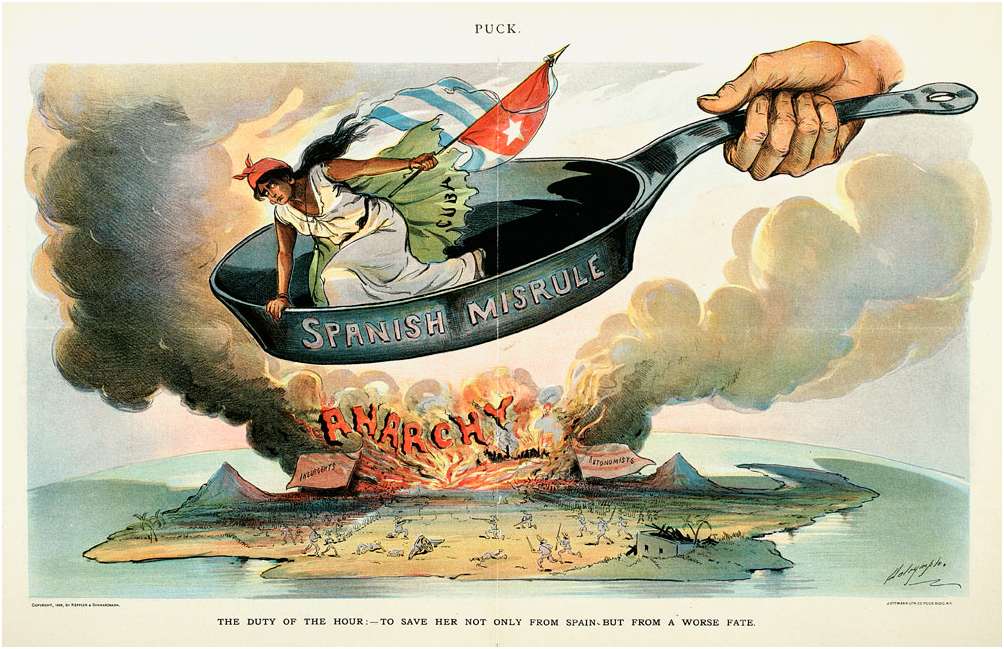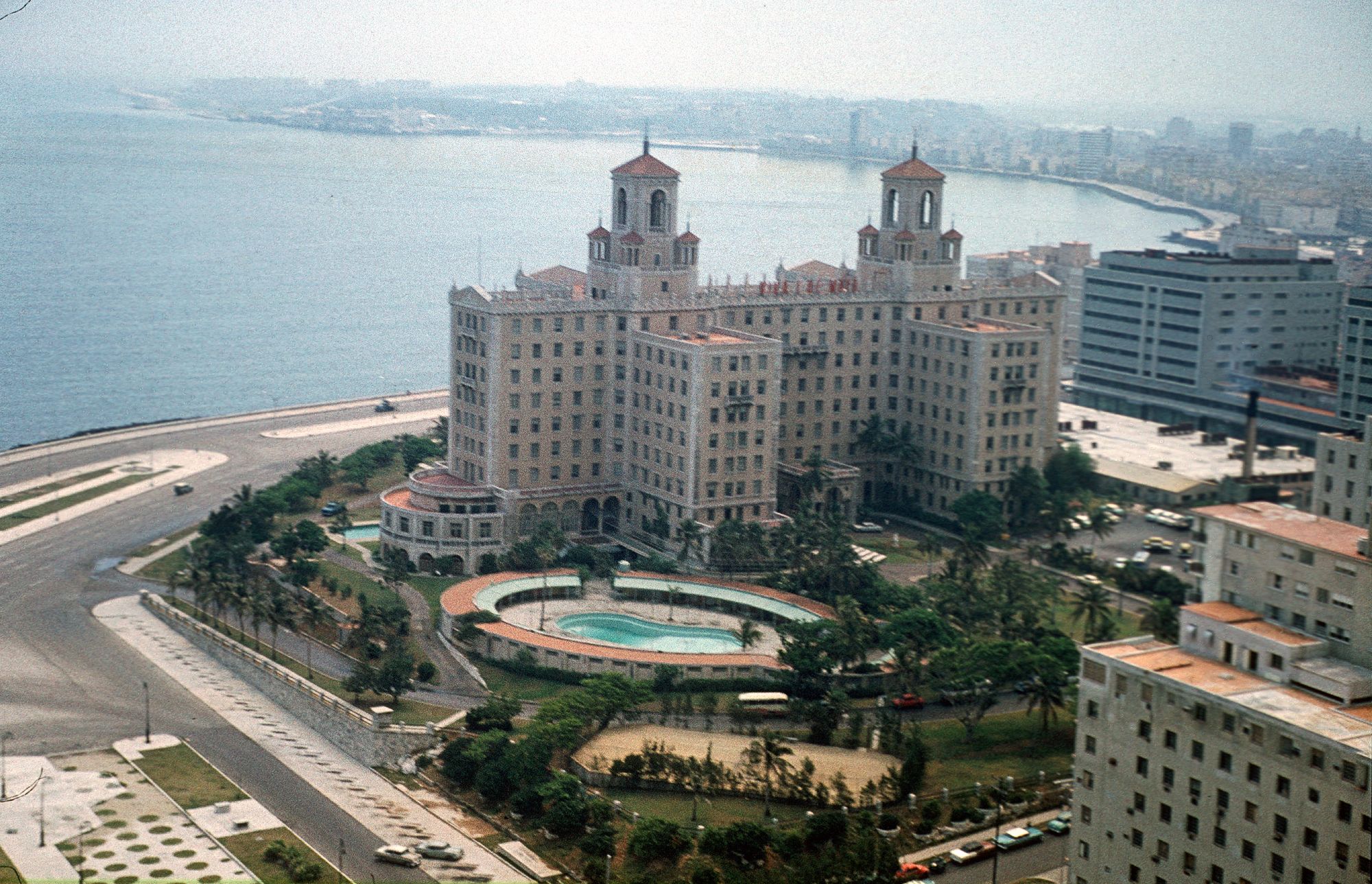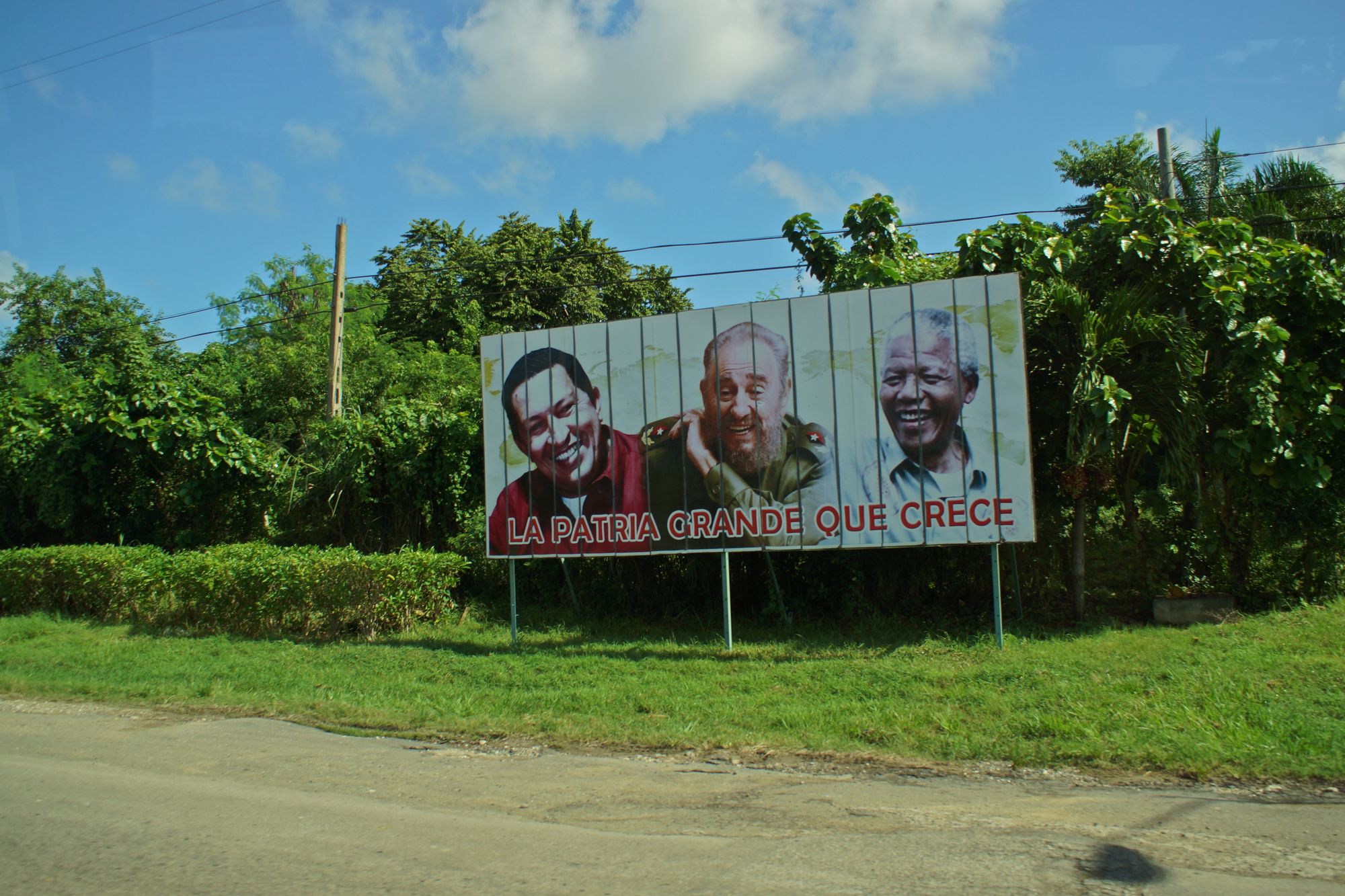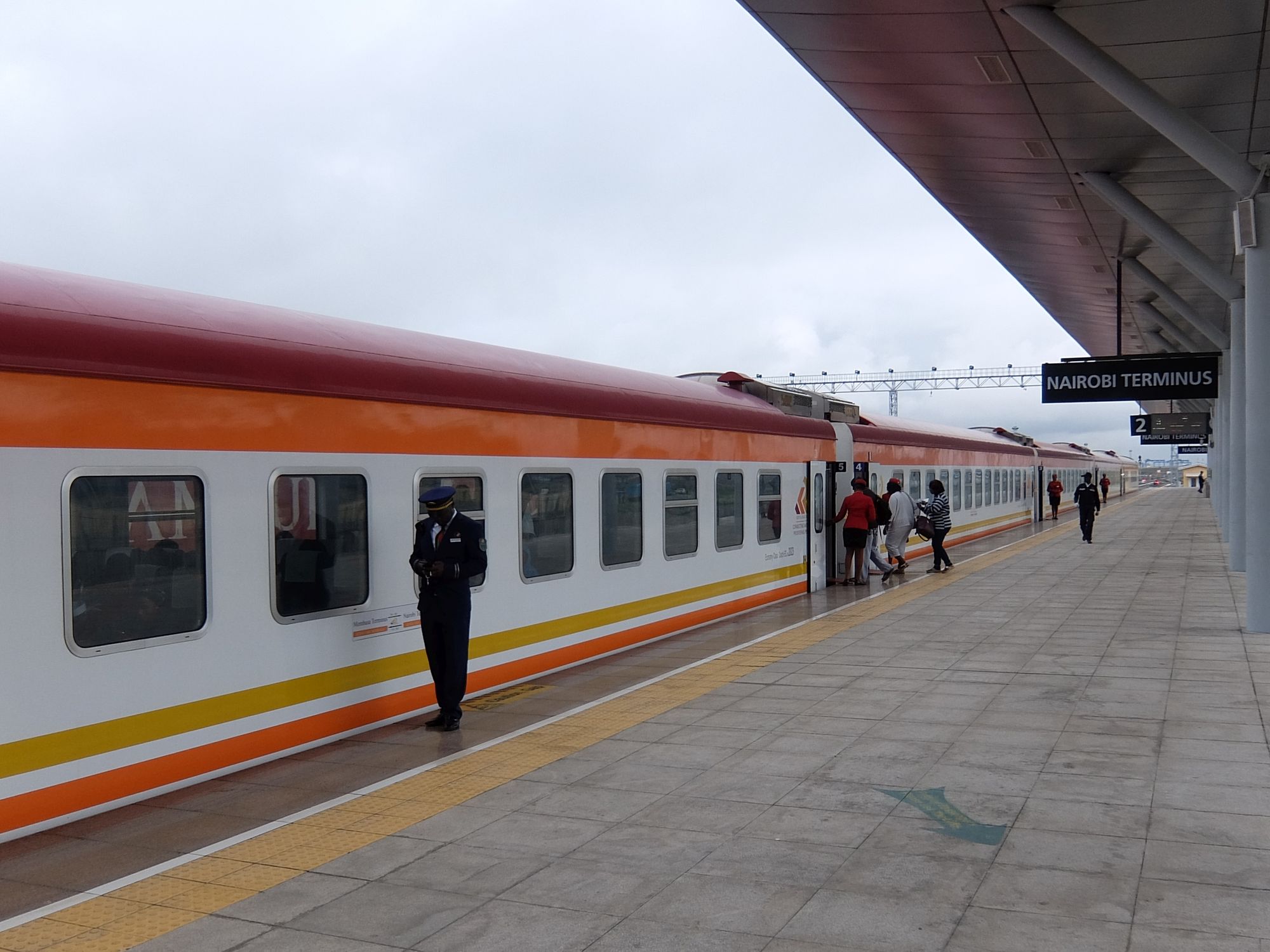The year is 1950. Cuba is a vibrant and modern country, with the fifth highest per capita income and the third highest life expectancy in the Western hemisphere. Along with having the most television sets per person, the island is also home to a democratic and progressive system of government under a constitution passed just a decade earlier. Within half a century, however, virtually all of this disappeared. By 2000, Cuba’s per capita consumption was little more than half of its 1950 levels, and a single-party dictatorship ruled the country with an iron fist. Driven by the rise of communism, these changes were part of a larger political process that not only led to significantly lower standards of living for many Cubans, but also fundamentally changed the country’s relationship with the United States, a neighbor and major world power sitting just 90 miles away.
This geographic proximity has long been a double-edged sword for Cuba, particularly throughout the Cold War. Although the United States may have served as an omnipresent and existential threat to the communist regime, Cuba successfully leveraged that perception to obtain substantial military and economic aid from the Soviet bloc. This strategic partnership presented a severe threat to the United States that was particularly heightened by the 1962 Cuban missile crisis. Today, despite recent efforts to normalize diplomacy, the country continues to be a proxy for world powers generally hostile to American interests: China has greatly increased its economic investment in Cuba, while Russia has made a number of smaller gestures meant to reignite the countries’ historical partnership. Unsurprisingly, this history has been well reflected in American public opinion, although in recent years, Americans have become generally divided in their views about Cuba.
The prospect of nuclear warfare has substantially diminished since the 1960s, but Cuba’s role as a proxy continues to threaten American national security. Unfortunately, the obvious solution of diplomacy is problematic. Today, the Cuban government ignores human rights, detains political prisoners, and fails to provide even basic necessities for its citizens, despite promises of a better future after the 2018 transition of power from the Castro brothers to current President Miguel Díaz-Canel. Russia and China have ignored these abuses, making American engagement more difficult. However, although it is important to consider the human consequences of the current regime, it is still in the United States’ best interest to negotiate with Cuba—not just to mitigate the potential threat of geopolitical conflict, but also to enable mutually beneficial trade and exchange as neighbors. This is the dilemma that has manifested itself throughout the history of American foreign policy: choosing between authoritarianism or a military threat as the greater evil. In the context of Cuba, it is not impossible to address both of these challenges, especially because commerce can act as an additional incentive for preserving a friendly relationship.
A Complicated Past
Being so close to the United States, Cuba has always maintained a special relationship with its northern neighbor. Although the island was a Spanish colony until the late 19th century, the United States had constantly coveted the riches of its agricultural industry. The American desire for influence over Cuba is not merely a Cold War-era phenomenon: this idea was expressed as early as 1823 through the Monroe Doctrine, and reiterated by the attempted purchase of Cuba with the Ostend Manifesto in 1854. By the dawn of the 20th century, after the Spanish-American War (made possible by the explosion of the USS Maine in Havana Harbor), the United States acquired Cuba outright.

However, the traditional American notions of freedom and democracy did not necessarily carry over into territories like Cuba. After the signing of the Platt Amendment in 1903, which granted independence and self-governance but still allowed the United States to intervene in domestic affairs, Cuba spent more than three decades under the rule of a cycle of mostly corrupt dictators. A significant shift came in 1940 with the signing of a new constitution, which provided universal suffrage and placed restrictions on the presidency. This new system was initially successful: the first president, Fulgencio Batista, promptly stepped down at the end of his term in 1944 and allowed his opponent to take power. Nonetheless, the power grabs of previous decades continued to haunt Cuba, and in 1952, Batista seized power in a military coup upon realizing that he would not win the popular vote for the presidency.
Once again, the United States intervened. Despite the human rights violations associated with his suspension of both civil liberties and the 1940 constitution itself, Batista was viewed as a reliable ally in preventing the rise of communism. Under the Batista regime, American businesses in Cuba flourished and became dominant players in providing essential services, and the island was increasingly viewed as a glamorous destination in popular culture. The United States also provided limited military support to Cuba, as part of a general program meant to protect American interests against Soviet influence throughout much of Latin America.
This prioritization of strategic influence over democracy and freedom is not surprising in the context of the 1950s, the dawn of the nuclear age and the beginning of the Cold War. However, this had serious consequences beyond Batista’s repression: for instance, the dominance of American-owned businesses in Cuban society generated significant resentment, which partly enabled Fidel Castro’s rise to power as a liberator. In this context, the American willingness to ignore the will of the Cuban people came at a great cost, and ironically led to the destruction of the very partnership that the United States had hoped to maintain by supporting Batista. This phenomenon is not unique to Cuba, and has manifested itself elsewhere during the post-WWII era: for example, the 1953 CIA intervention in Iran sustained an unpopular regime that would be toppled less than three decades later by vehemently anti-American clerics, while American support for the corrupt South Vietnamese government led to a protracted war and an entire region hostile to US interests. Thus, history shows that the long-term sustainability of a geopolitical relationship can depend on the presence of democracy, offering a critical lesson as the United States reconsiders its future with Cuba in the 21st century.
The Shock of 1959
The “loss” of Cuba to communism as a result of Fidel Castro’s 1959 revolution dealt a shock to the American foreign policy apparatus, not in the least because an American-backed dictator had fallen to a guerilla fighting force. At the time, Nationalist China had fallen only ten years earlier, and the Korean War had just concluded with a semi-permanent partition of the peninsula despite heavy American involvement, both of which led to a marked increase in the number of people living under communist rule. Further adding to the tension was the Soviet Union’s successful launch of Sputnik I just two years earlier, sparking the space race and increased concerns about military technology. These developments overshadowed American successes in Iran and Guatemala, where CIA-backed action thwarted the rise of two nationalist leaders perceived as hostile toward American business and strategic interests.

This development irreversibly changed US-Cuba relations for the worse. While the United States initially recognized Castro’s government, his decisions to nationalize all foreign-owned assets and businesses, many of which were American-owned, rapidly soured relations with Washington, and led to the end of diplomatic relations in early 1961. The infamous Bay of Pigs invasion in April 1961 further solidified the antagonism between the two countries, while the Cuban Missile Crisis the following year made it clear that Cuba had officially embraced the Soviet bloc. By this point, the United States had lost all influence over Cuba, and had to stand idly by as Castro’s government executed thousands of its own people accused of being dissidents. This rapid progression from ally to foe, and from the relatively lesser evils of the Batista years to the greater evils of execution and starvation under Castro, was perhaps the unfortunate product of misplaced American priorities.
A communist government in Cuba carried serious consequences throughout the Cold War. For instance, the Soviet Union installed one of its first overseas listening posts in Lourdes, Cuba, in 1967, with the clear intention of surveilling the United States. The USSR also provided a substantial amount of exports to the island, allowing the Castro regime and its undemocratic institutions to survive and persist even through periods of economic downturn and crop failures. Although this Soviet aid was similar to the amount of American aid given in the pre-Castro era, the motives were quite different: while the United States had many private business interests in Cuba that lobbied for continued aid and protection from Washington, the USSR was driven mostly by the military uses of the island, and to a lesser extent, for propaganda promoting a socialist world.
The Sinking Mother Ship
These early trends of hostility toward the United States continued throughout much of the Cold War. Although Castro also found alliances with other countries not aligned with American interests, such as turning to China amid the Sino-Soviet split, Cuba was still heavily tied to the USSR. The island remained a constant threat less than 100 miles from Florida, serving as a constant reminder of the Soviet global influence.
Beginning in the 1980s, however, the facade of communist success had begun to crack. Popular movements had emerged throughout Eastern Europe on a much greater scale than before, while the ill-fated Soviet invasion of Afghanistan dragged on at a severe economic cost. This economic drain had severe impacts on Cuba as well: in particular, a 1990 trade agreement, signed to last just one year, marked the beginning of significantly reduced trade and a significant curtailing of the USSR’s generosity. In September 1991, the USSR withdrew all of its troops stationed in Cuba in response to pressure from Washington, virtually signaling the end of Cuba as a military threat to the United States. Even after the fall of the Soviet Union in 1991, the Yeltsin administration in Russia continued to curtail not only the substantial aid, but also the favorable trade terms that Cuba had enjoyed for both its agricultural exports and its imports from the former Soviet bloc.
Even in light of these significant developments, however, the United States failed to capitalize on the opportunity to bring Cuba into the American sphere of influence. In fact, Congress passed the Cuban Democracy Act in 1992, further tightening the existing sanctions on Cuba. Since Castro naturally had no interest in renouncing the authoritarian policies he carried out over the prior three decades, he turned away from the United States as a potential economic savior for his country. Other countries quickly responded, and in particular, socialist Venezuela under Hugo Chavez was eager to fill in the gap left behind by the USSR. With its vast supply of oil, and an ideologically similar regime also focused on reducing reliance on the West, Venezuela was uniquely positioned, and a steady trade stream of oil, food, security forces, and doctors soon began.

In focusing so heavily on the repressive nature of the Castro regime in Cuba, the United States failed to bring the island back within its sphere of influence. The timing of Cuba’s economic downturn was ripe for the prosperous United States to step in with the aid needed to feed the Cuban people, with the potential to allow for a gradual transition of power away from Castro. Instead, the United States hardened its stance on Castro’s regime with the 1996 Helms-Burton Act, further isolating Cuba from the American sphere on account of human rights violations. Although the legislation was intended to represent a major part of the response to Cuba’s shootdown of two American civilian planes on a humanitarian mission, it gave Castro no choice but to continue his association with countries perceived as antagonistic toward the United States and the liberal world order.
Unfortunately, the well-intentioned premise of the American embargo has led to even worse results for the Cuban people. Authoritarianism still persists despite the death of Fidel Castro and his brother Raúl’s recent transition of power. Today, more than six decades after the revolution that promised material improvement for the people, the economy has remained mostly stagnant and will soon be facing the challenge of an aging population. Accordingly, it seems that current American efforts at forcing the communist regime out have only caused great pain, which can only create future resentment should the United States choose to engage with Cuba once again.
Winning Hearts and Minds (of Political Leaders)
In the 21st century, however, the challenge of appealing to Cuba and its leadership has become even more complex. Although the traditional problem of human rights still persists as a key barrier to effective negotiations, the United States has also recently lost its position as the only major bidder on a Cuban strategic partnership. For example, throughout the past two decades, China has risen both economically and politically, expressing grand ambitions for global influence through large-scale foreign investment efforts like the Belt and Road Initiative. This has included substantial investment and debt forgiveness in Cuba. Surprisingly, though, China has not gotten much materially in return, which further complicates the future of US-Cuban relations. Given the history of American interventions and their entanglement with business interests, the backwardness and relatively low productivity of the Cuban economy makes it difficult to justify significant American investment into the island—particularly if China is willing to increase its bid to maintain its influence in response to any American gesture.

Furthermore, the rapid technological advances of the past two decades also present new challenges to future American engagement. In particular, American technology of the post-WWII era has been traditionally acknowledged as the best available in the world, and getting access to that technology has been a key reason for engaging with the West. For instance, Iran has long desired Western aircraft, and eagerly placed orders as soon as sanctions were lifted as part of its 2015 nuclear pact. However, Chinese technology has improved substantially in recent years, and the range of Chinese exports now includes Huawei’s 5G cellular infrastructure, high-speed railways and rolling stock, and will soon include passenger jet aircraft, including a model currently being developed with substantial Sino-Russian cooperation. With the American advantage in technology declining in a world of viable alternatives, the United States must offer many more incentives to sway Cuba back into its sphere of influence.
The alternative—preserving the status quo of isolating Cuba—is even more devastating. For example, Cuba is home to a listening post that was mothballed in the wake of the Soviet Union’s collapse, and recently, Russia has reactivated the station at great expense. While modern technology may be more resistant to this type of spying, Russian investment suggests otherwise, opening the possibility that the security of nearby American military bases could be compromised. The strategic implications of Cuba’s proximity were also highlighted in 2017, when American diplomats and family members in Cuba were impacted by apparent sonic attacks, with similar symptoms found in China the following year. While the causes of the Americans’ discomfort are still unclear, these incidents serve as a reminder that, although quite unlikely, it is not impossible that parts of the American mainland could become a target for similar attacks in the future.
Perhaps the most appealing part of Russian and Chinese engagement with Cuba, though, is that both countries have virtually no requirements or expectations for human rights or democracy. Under such terms, members of the Cuban ruling class are able to maintain their powerful positions and have nothing to lose. In contrast, cooperation with the United States would most likely be coupled with a requirement to move toward democracy and a more open market, which would most likely threaten the interests of the elite. With history in mind, and in moving forward, the United States must carefully consider this balance between advocacy for democracy and the national security implications of Cuba as a proxy for traditional American rivals. As seen throughout the 20th century, these two challenges are intertwined in a zero-sum game, and unless both are simultaneously addressed, there cannot be a sustainable relationship between the United States and Cuba.
Rediscovering Paradise
On a less pessimistic note, increasing American interaction with Cuba has significant benefits for both countries. In particular, Cuba’s economy is heavily dependent on its tourism industry, and the current US restrictions on travel have resulted in significant declines in tourist numbers—and thus revenue. With the Cuban government controlling a majority of this sector, the stakes are even more clear for the politicians in charge. Meanwhile, American businesses also benefit from this wave of tourism: for instance, when Americans were briefly able to travel on commercial flights to the island a few years ago, virtually all of the major airlines fought for government approval to run the flights, implying strong demand and the prospect of significant profits. Besides tourism, other industries such as agriculture could gain from mutual trade. Again, the close proximity of the two countries makes a notable difference: tourism would not be nearly as significant without the relatively inexpensive airfare, while the exchange of goods is particularly attractive due to much lower shipping costs. These benefits would not be difficult to reap, but they all require a better US-Cuban relationship.

Unfortunately, the current situation is a stalemate that is increasingly difficult to solve. Previously, the Obama administration’s detente with Cuba offered much hope with its extensive concessions for Havana that included lifting sanctions, opening de facto tourist travel, and ending the wet-foot, dry-foot policy that gave fleeing Cuban citizens legal status in the United States. However, these historic policy shifts have not shown notable success: for example, Raul Castro symbolically transferred power in 2018, a year after the Trump administration reversed the changes. Even worse, US-Cuban relations have recently dropped to a historic low, with Washington considering whether to designate Cuba as a state sponsor of terrorism due to its strong ties with Nicolás Maduro’s regime in Venezuela.
Nonetheless, a new detente that is beneficial for both the United States and Cuba is still remotely possible. The United States would have to commit to a long-term normalization of relations, as well as significant economic aid to replace the subsidized oil currently offered by Venezuela. However, there is an important caveat: to ensure that Washington is continually motivated to provide this aid, Cuba would have to gradually sever ties with Maduro, which could greatly aid the apparent American campaign to remove him from power. Simultaneously, this scheme would provide an opportunity for the Cuban government to take a first step in affirming the notions of democracy and human rights, even if those rights initially take hold elsewhere. While this scenario is unlikely, it does raise a critical point that American policymakers should consider in moving forward: the United States has the financial resources that Cuba needs, and in return, Cuba can offer some of the political influence that the United States wants.




